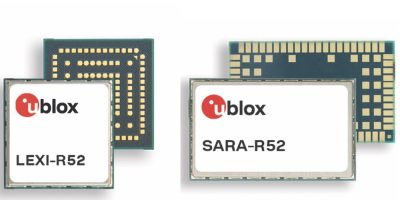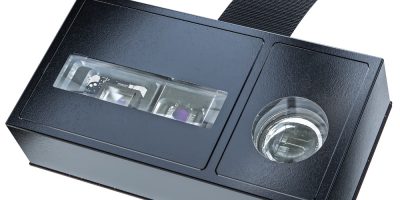u-blox has announced two new LTE-M cellular module series, the SARA-R52 and LEXI-R52. These modules, designed for industrial applications, are based on the u-blox UBX-R52 cellular chip and are tailored for integrated and concurrent positioning and wireless communication needs. Typical IoT use cases include fixed and mobile applications such as metering and utility, asset tracking and monitoring, as well as healthcare.
A set of new features embedded within the u-blox UBX-R52 chip will allow users to dispense with additional components to design their products. SpotNow is a new positioning feature unique to u-blox, which provides position data with a 10 m accuracy within a couple of seconds. It is meant for occasional tracking applications such as recycling waste dumpsters, elderly trackers, or cleaning machines. The uCPU feature allows users to run their own software within the chip without using an external MCU. The uSCM (Smart Connection Manager), on the other hand, is designed for automatic connectivity management to achieve either best performance or lowest power consumption, for example when a connection is lost and needs to be re-established.
The new u-blox R52 series also introduces a new combo module designed to offer simultaneous GNSS and cellular connectivity – an important attribute for applications requiring continuous or cyclic tracking. The u-blox SARA-R520M10 combo module comes equipped with an integrated u-blox M10 GNSS receiver and ensures concurrent tracking with low-power consumption, better TTFF, and improved RF sensitivity. It is tailored for users who seek the simplicity of a pre-integrated cellular and GNSS solution.
Many LTE-M modules only offer an RF output power of 20-21 dBm, whereas the new R52 series offers 23 dBm, ensuring stable connectivity in challenging coverage conditions. The LEXI-R52 provides the same features as the SARA-R52, but in a smaller form factor (16 x 16 x 2 mm), ideal for ultra-small applications like wearables.
Samples are available now, with volume production scheduled for Q3 2024.
https://www.u-blox.com







